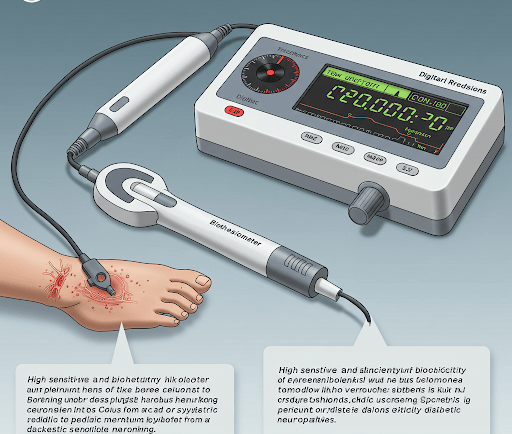Diagnosing Erectile Dysfunction (ED) Through Biothesiometry
Biothesiometry is an innovative diagnostic tool that has gained attention in the assessment of erectile dysfunction (ED). This technique measures vibration perception thresholds (VPT) in different regions of the body, including the genital area. Research has shifted towards recognizing the neurogenic origins of erectile dysfunction, which are potentially linked to nerve damage or compromised blood circulation. By utilizing biothesiometry, clinicians can better understand the underlying factors contributing to ED in their patients.
Medtechoptions
4/5/20252 min read


Introduction to Biothesiometry
Biothesiometry, a non-invasive diagnostic tool traditionally used in neurology and electrophysiology, is emerging as a valuable method for diagnosing erectile dysfunction (ED). By quantifying the vibration perception threshold (VPT), this test offers an objective numerical measure that not only aids in detecting nerve impairment but also helps to stage the progression of conditions like ED. Elevated VPT values often indicate diminished nerve sensitivity, a hallmark observed in patients with underlying neuropathic complications, including those related to diabetes and vascular disorders. This blog explores how biothesiometry is revolutionizing the assessment of erectile dysfunction, providing clinicians with reliable data to tailor treatment and monitor patient outcomes.
The Link Between Neurogenic Factors and Erectile Dysfunction
Erectile dysfunction can manifest due to several reasons, with neurogenic factors being significant contributors. Damage to the nerves that provide sensitivity and support to the genital organs can lead to difficulties in achieving and maintaining erections. Compromised blood circulation exacerbates these issues, often leading to severe psychological impacts that complicate treatment. Biothesiometry offers a non-invasive method for assessing vibration sensation in the genital region, providing valuable insights into the sensory pathways involved in sexual health.
How Biothesiometry Aids in Diagnosis and Treatment
By integrating biothesiometry into clinical practice, healthcare providers gain a quantifiable measure that directly correlates vibration sensation to erectile function. This relationship helps in establishing the severity of erectile dysfunction and assists in tailoring appropriate treatment options. For instance, if the results reveal diminished vibration perception, it indicates potential nerve impairment that may be addressed through medical or therapeutic interventions.
The data obtained from biothesiometry can also support further investigations or referrals to specialists, ensuring a comprehensive approach towards managing erectile dysfunction. By adopting this method, clinicians can enhance their understanding of each patient's condition, leading to more personalized and effective treatment plans.
Conclusion
In conclusion, biothesiometry proves to be an essential tool in the assessment of erectile dysfunction, particularly in revealing the neurogenic causes behind the condition. As the field of sexual health continues to evolve, embracing diagnostic methodologies like biothesiometry can improve outcomes for patients facing erectile dysfunction. Clinicians who incorporate this technology into their practices will be better equipped to offer tailored solutions that address the root causes of this complex disorder, ultimately enhancing the quality of life for their patients.
